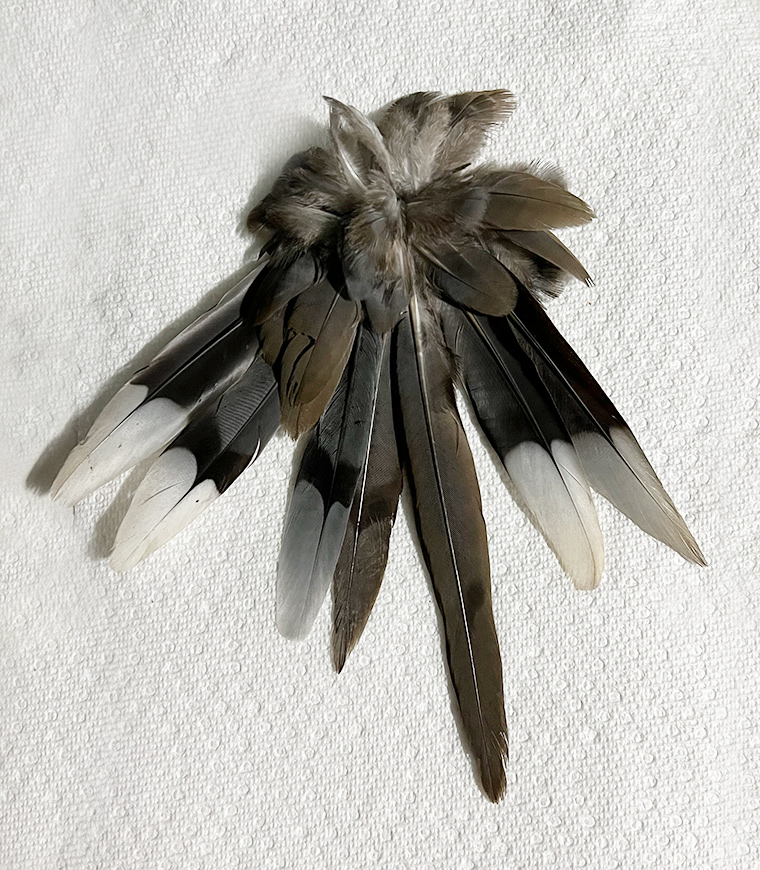
Joyce found this interesting specimen on our driveway. She carefully picked it up and placed it on a paper towel in just the configuration that appeared on the driveway. What is it? Well, it looks like a set of tail feathers from a bird…but which species?
Here follow a few pictures of the species from which this striking feather display originated. It is one of our commonist birds…the Mourning Dove (Zenaida macroura).
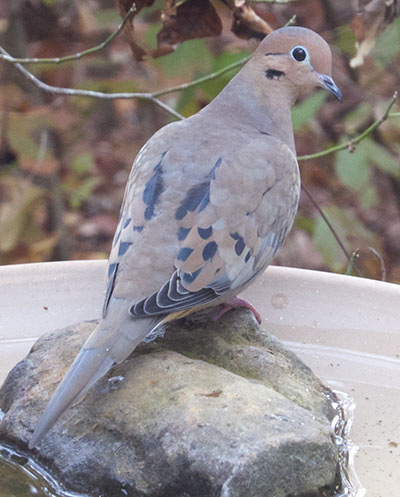
Here is a Mourning Dove perched on a rock in our back-deck birdbath.
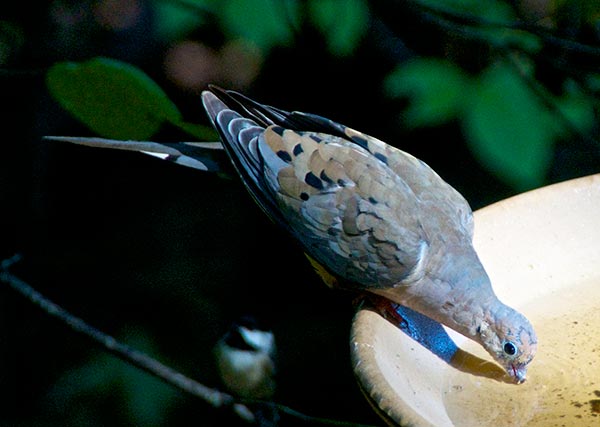
Same birdbath, same species, but different lighting conditions. In this case light was lateral from the right. Subtle iridescent coloration, not seen in most lighting, is revealed here.
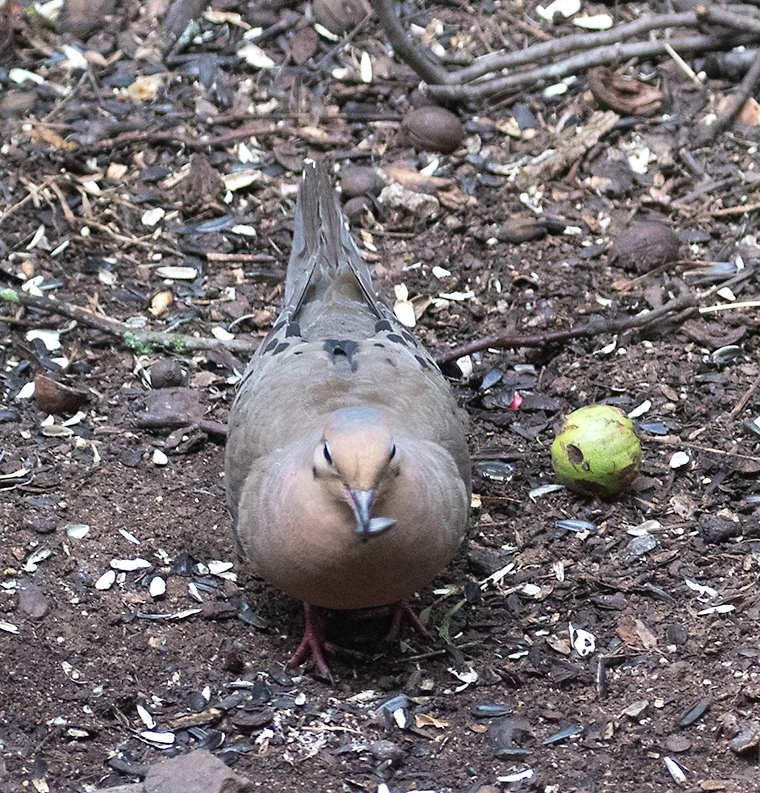
Front view of a Mourning Dove picking through seeds outside our kitchen window. It liked the looks of a black-oil sunflower seed. Large green object is a seed from a Shagbark Hickory (Carya ovata) which grows overhead.
It is evident that there is no sign of any flamboyant white-tipped tail feathers in any of the Mourning Doves photographed above. These are most commonly shown only when they take off from the ground. Unfortunately, I have not yet gotten a good photograph of a Mourning Dove taking off. In consulting my various bird guides (I found a good figure of tail feathers in National Geographic’s Field Guide to the Birds of North America), and searching various on-line sites, I discovered that normally Mourning Doves have four or five white-tipped feathers on each side of their tail. Joyce’s specimen pictured above has apparently lost a feather or two during its tribulations prior to landing on our driveway.
Wikipedia has an excellent article on Mourning Doves if you want to learn more about these fascinating birds. As always, I am interested in the derivation of scientific names. Here is what the Wikipedia article says about the Mourning Dove (Zenaida macroura):
“The mourning dove is now placed in the genus Zenaida, introduced in 1838 by the French naturalist Charles Lucien Bonaparte,[12][13] commemorating his wife Zénaïde. The specific epithet is from the Ancient Greek makros meaning “long” and -ouros meaning “-tailed”.”
When one considers what might have happened to produce the tail feathers found by Joyce, some possible candidates are evident in photographs taken through the windows in our house.
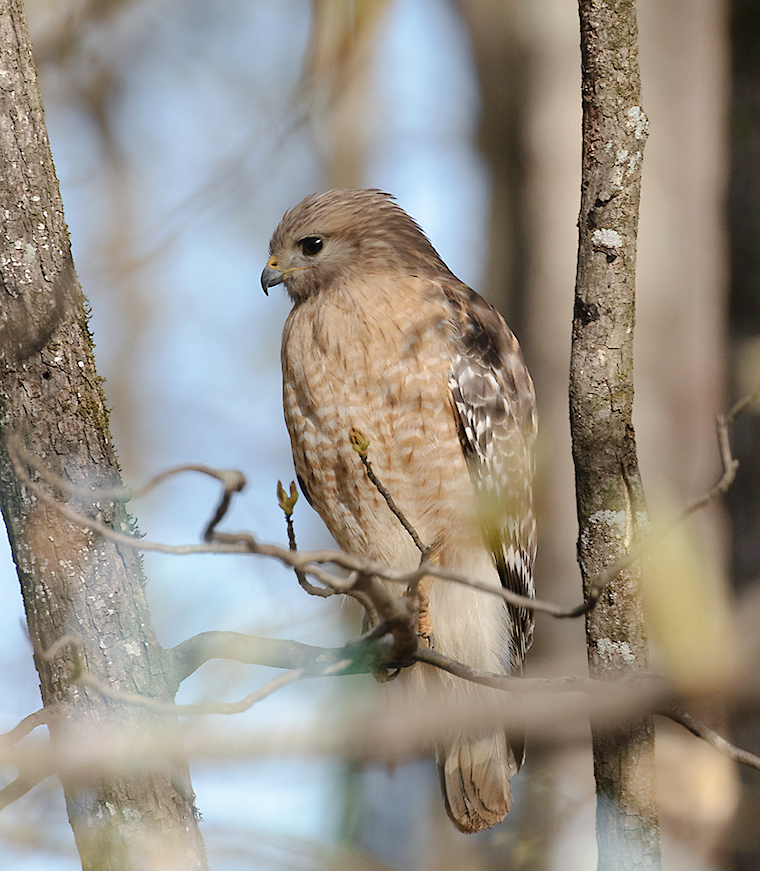
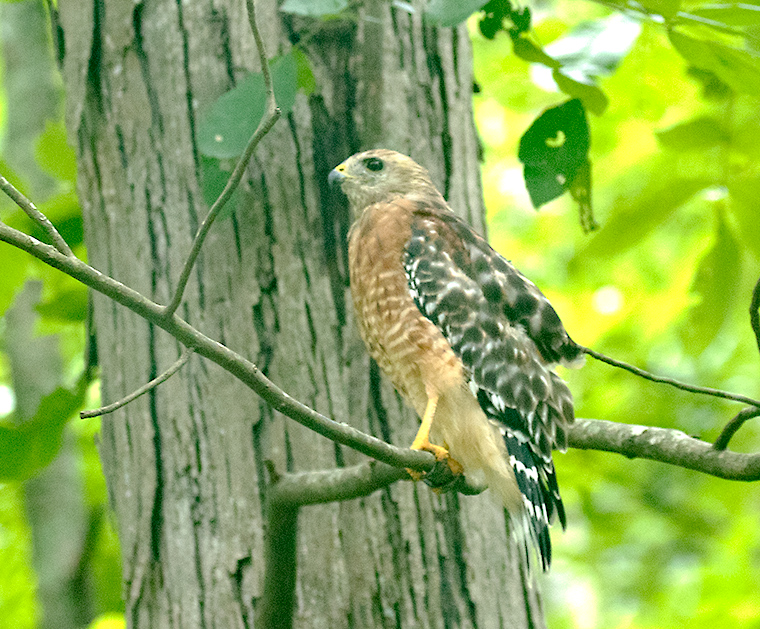
The first of these is the Red-shouldered Hawk (Buteo lineatus). These are the most common hawks that we see around the house. The recent photographs show two (or possible the same one) taken through our windows.
The individual in the second photograph looks somewhat disheveled because it had just made an unsuccessful stoop to the the ground to try to catch something. Birds (including Mourning Doves), squirrels, and chipmunks were feeding on seeds we had put on the ground, and I cannot be sure which type the hawk was attempting to catch. (Incidentally, the tree shown in the background of the second photograph is the Shag-barked Hickory that produced the large green seeds (nuts), one of which appears in the last photograph of a dove.)
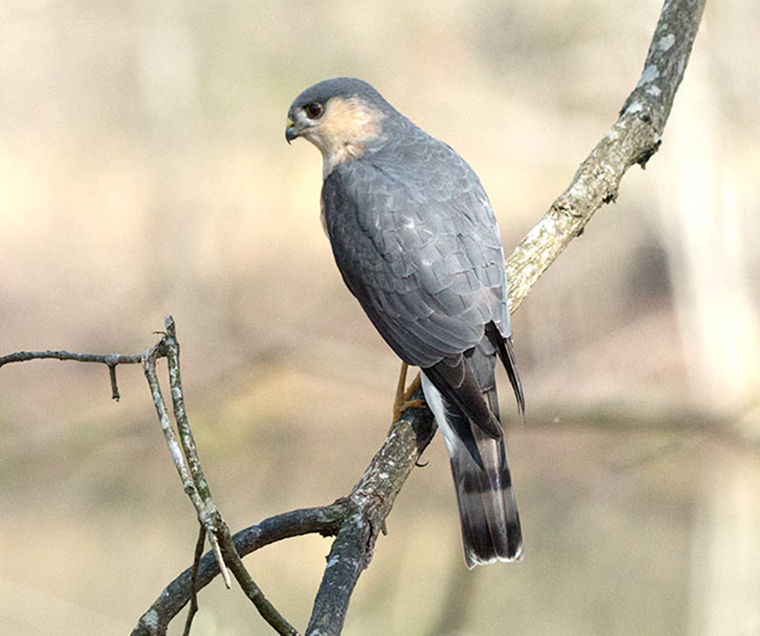
However, Red-shouldered Hawks are not known to be especially good at catching birds, so I suspect that a squirrel or chipmunk was its likely target. We sometimes do see Hawks which are adapted to catching birds. In our case this is the Cooper’s hawk (Accipter Cooper). Pictured above is an adult. (This photograph gives an erroneous impression of the subject’s size relative to the juvenile shown in the next two photographs. It would be about the same size if compared side by side.)
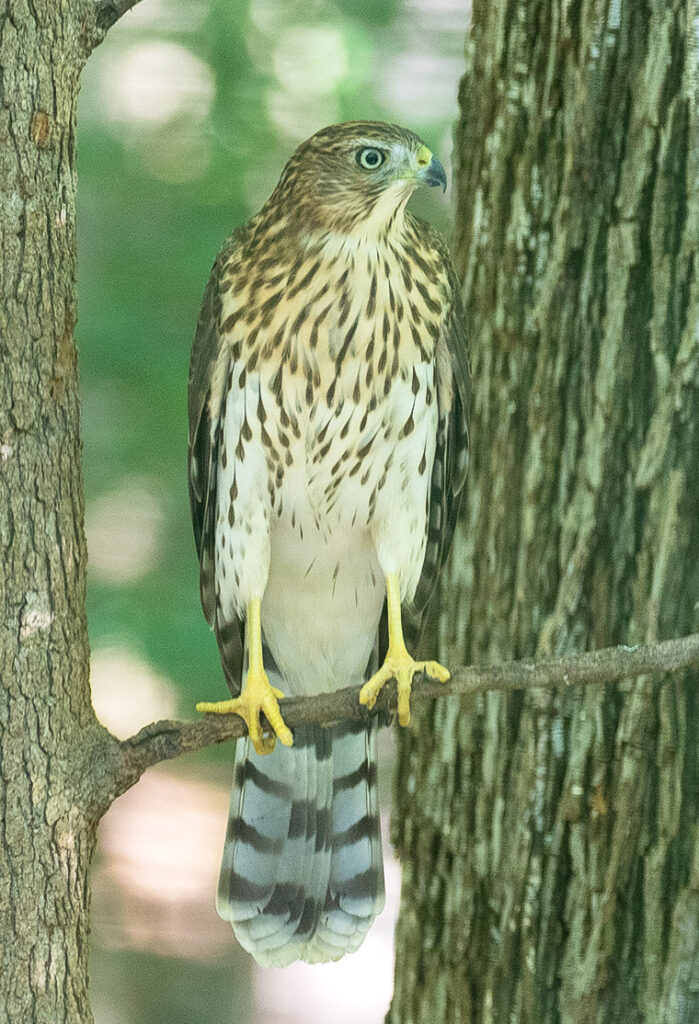
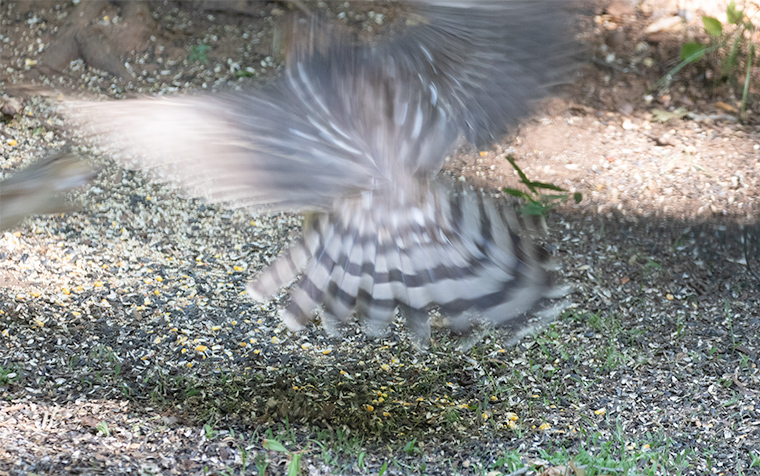
The last two photographs show a juvenile Cooper’s that appeared outside our kitchen window recently. It made an unsuccessful stoop after a squirrel. I described this incident in an earlier post which has more information about Cooper’s Hawks.
So we will never know for sure what caused the demise of the Mourning Dove in question. I have pictured what I believe are the most likely candidates, but there are several others that can not be excluded.
Discover more from A Naturalist's Journal
Subscribe to get the latest posts to your email.
